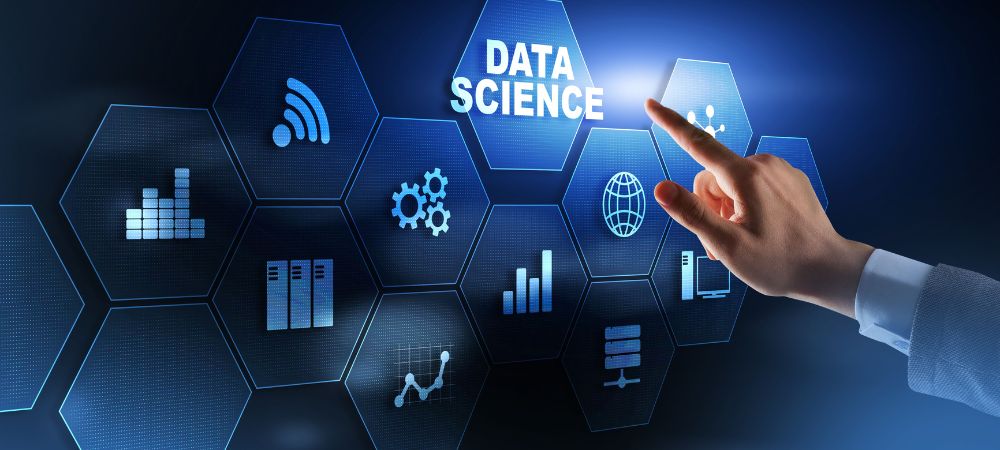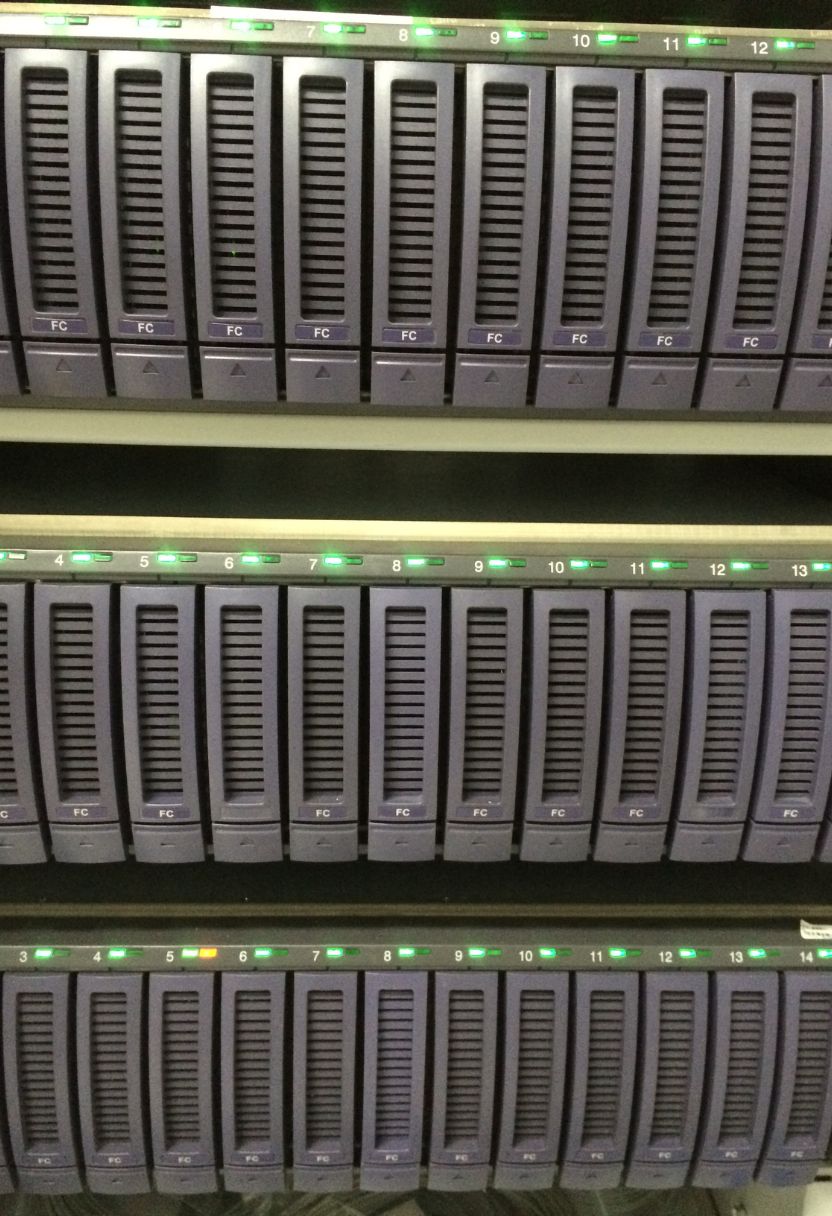

In the ever-evolving world of data science, the importance of realtime data can't be overstated. Realtime analytics has become a buzzword for businesses and researchers alike, and for good reason. To find out more click that. It's not just about having the most up-to-date information; it's also about making decisions on-the-fly that can significantly impact outcomes.
One might think that traditional batch processing is sufficient, but that's not always true. In many scenarios, waiting hours or even minutes for data to be processed isn't feasible. Think about financial markets: stocks prices change in milliseconds! If a trader were to rely on outdated information, they'd probably lose money—or worse—even miss out on lucrative opportunities.
Realtime data isn’t just crucial for finance though; it has applications across numerous domains. Access additional details view currently. Healthcare is one such field where timely information can save lives. Doctors and nurses need instantaneous access to patient vitals to make critical decisions. Imagine if they had to wait ages for lab results? That's totally unacceptable!
But let's not kid ourselves—realtime analytics isn't without its challenges. Gathering, processing, and analyzing data in real time requires robust infrastructure and sophisticated algorithms. It's no easy feat! Plus, there's always the issue of data quality. Poor-quality data can lead to misguided actions faster than you’d believe.
Yet despite these hurdles, companies are increasingly prioritizing realtime capabilities because of their immense benefits. They allow businesses to be more agile and responsive to market changes or customer needs almost instantaneously.
Moreover, realtime analytics fosters innovation by providing immediate feedback loops which are invaluable during product development phases or marketing campaigns. This kind of responsiveness wasn't available with old-school methods.
Although some may argue that the costs involved in implementing realtime systems can be prohibitive, others would say it's an investment worth making—they're not entirely wrong either way! After all, staying competitive often means being the quickest to adapt.
To sum it up (without getting too repetitive), ignoring the power of realtime data could very well put any business at a disadvantage in today's fast-paced environment. So yes, embracing this technology is sorta essential if one aims to stay ahead of—or at least keep up with—the curve!
Real-time analytics is a fascinating field that's been growing rapidly in today's data-driven world. It's all about making sense of data as soon as it comes in, without any delays. To make this possible, there are several key technologies that enable real-time analytics. Let's dive into some of these technologies and see how they work together to create magic.
First off, we can't ignore the importance of **in-memory computing**. Traditional databases store data on disk drives, which can be pretty slow when you need instant results. In-memory computing does away with this by storing data in RAM, allowing for much faster access and processing times. This means that businesses can analyze large datasets almost instantly, providing insights and information at the speed of thought.
Another critical technology is **stream processing** frameworks like Apache Kafka and Apache Flink. These tools allow for continuous ingestion and analysis of streaming data. Instead of waiting for batches of data to come through, stream processing handles each piece of data as it arrives. This is crucial for industries where timing is essential—think finance or healthcare—where even a slight delay could have significant consequences.
Don't forget about **distributed storage systems** such as Hadoop Distributed File System (HDFS) or Amazon S3 either! These platforms break down massive amounts of data into smaller chunks distributed across multiple servers, making it easier to process them simultaneously. The result? Faster retrieval and analysis times.
But wait! There's more! Machine learning models have also become integral to real-time analytics. For even more info see it. Leveraging machine learning algorithms allows systems to predict trends or detect anomalies as new data streams in continually. For instance, fraud detection systems use machine learning to identify suspicious activities the moment they occur rather than after the fact.
One must also consider the role played by advanced **networking technologies** like 5G, which significantly reduces latency and increases bandwidth capacity compared to its predecessors. With quicker network speeds and more reliable connections, real-time analytics becomes achievable even in remote locations or during high traffic periods.
It's not just hardware but software too! Real-time databases like Redis or Druid offer incredibly fast read-and-write capabilities tailored specifically for real-time applications.
However—and here's where things get tricky—not all organizations are ready to implement these cutting-edge technologies due mainly due cost factors or lack expertise needed run them efficiently . Plus integrating various tech components seamlessly isn't always straightforward task; It requires careful planning proper infrastructure setup .
All said done though , there's no denying impact these key technologies have had enabling realtime analytics transform way businesses operate today . They empower companies make decisions based up-to-minute insights improving efficiency competitiveness overall performance .
So yeah , while there's still room growth improvement field , current state technology already offers exciting possibilities those willing embrace change adapt accordingly . Here's looking forward future advancements continued evolution realtime analytics space !
The Evolving Role of Artificial Intelligence in Prediction It's kinda amazing, isn't it?. How artificial intelligence (AI) has become so crucial in our lives, especially when it comes to predicting the future.

Posted by on 2024-07-11
When diving into the world of Artificial Intelligence (AI) and Machine Learning (ML), you can't avoid talking about tools and frameworks that make model development a breeze.. These technologies have revolutionized how we approach data science, turning complex tasks into more manageable processes.

Posted by on 2024-07-11
Realtime analytics has become a game-changer across various industries, bringing forth new possibilities that were once thought impossible. It's not just about crunching numbers fast; it's about making decisions in the moment, and boy, does that change everything! Let's dive into some use cases and applications of realtime analytics in different sectors.
First off, retail. Retailers ain't just sitting around waiting for sales reports at the end of the month anymore. With realtime analytics, they can track customer behavior as it happens. Imagine a store manager getting instant alerts when popular items are low on stock or when there's an unusual spike in purchases for a particular product. They can restock shelves pronto and even adjust marketing strategies on the fly. It's like having a crystal ball but way more accurate.
Finance is another industry where realtime analytics shines bright. Banks and financial institutions use it to detect fraudulent activities as they occur. Instead of discovering fraud days later when it's too late to do much about it, these systems flag suspicious transactions immediately, allowing for quick action to prevent loss. Moreover, traders utilize realtime data to make split-second decisions in high-frequency trading environments where every millisecond counts.
Healthcare benefits immensely from this technology too. Doctors and medical practitioners no longer have to wait hours or days for lab results or patient monitoring data. Realtime analytics tools provide immediate insights into patient conditions, enabling quicker diagnoses and treatments which could very well save lives. Hospitals can also manage their resources better by predicting patient inflows based on current data trends.
Manufacturing isn't left out either (how could it be?). Realtime analytics helps monitor machinery performance and production lines continuously. If a machine starts malfunctioning or deviates from its normal operation pattern, alerts are sent out instantly so maintenance teams can address issues before they escalate into costly downtimes or defects in products.
In the realm of transportations – oh my – things've changed dramatically with realtime analytics onboard! From optimizing delivery routes based on current traffic conditions to monitoring vehicle health remotely (think predictive maintenance), logistics companies now operate smoother than ever before.
Even social media platforms harness the power of realtime analytics by tracking user engagement live—likes, shares, comments—you name it! This allows them to tweak algorithms quickly for better user experience or push trending content faster.
Surely there are other sectors benefiting greatly from this tech revolution such as energy management where smart grids rely heavily on instantaneous data processing to balance supply and demand efficiently without causing blackouts or wastage.
So you see? Realtime analytics isn’t some fancy term reserved only for tech geeks; it's reshaping how businesses across industries function daily—and quite effectively at that! And if you're still not convinced about its transformative potential…well then maybe you need some real-time convincing yourself!
In conclusion—not everyone might appreciate all these changes happening so fast but hey—that’s progress for ya! Embracing realtime analytics means staying ahead in today's fast-paced world rather than playing catch-up later down the line..


Implementing real-time analytics, while incredibly promising, ain't without its challenges and limitations. Oh boy, where do we start? First off, the sheer volume of data being generated every second is mind-boggling. Companies have to process this avalanche of information in real-time, which isn't exactly a walk in the park. It takes robust infrastructure and advanced technology to handle such tasks efficiently.
Now, let's talk about cost. Real-time analytics ain't cheap! The hardware and software investments required can be astronomical. Plus, there's ongoing maintenance that can't be ignored either. Smaller businesses often find themselves priced out of the game before they even get started.
Another hiccup comes up with data integration issues. Data from various sources needs to be seamlessly integrated for real-time analysis to work effectively. Unfortunately, different systems don’t always play nice together. This can result in inconsistencies and errors that throw a wrench into the whole operation.
Then there’s the matter of skilled personnel—or rather, the lack thereof! Real-time analytics demand highly specialized knowledge and expertise that's not exactly abundant in the job market. Finding people who know their way around these complex systems is like finding a needle in a haystack sometimes.
Latency—oh dear—is another thorny issue. Even with top-notch infrastructure, there’s no getting around some delay when you’re dealing with massive datasets streaming constantly from multiple sources. No system can entirely eliminate latency; it’s just part of the package deal.
Security concerns also rear their ugly heads when we talk about real-time analytics. With data flying back and forth at breakneck speeds, ensuring it's all secure becomes an enormous challenge on its own right! Cyber-attacks are becoming more sophisticated by the day and keeping sensitive information safe is turning into quite a cat-and-mouse game.
Lastly but not leastly (I had to save this one for last), let’s not overlook decision fatigue among analysts themselves! Having access to real-time data means decisions need to be made quickly—and constantly—which isn’t sustainable over long periods without burning out your team.
So yeah—it sounds peachy keen on paper but implementing real-time analytics has got its fair share of hurdles too! From high costs and integration nightmares to security worries and decision fatigue—it's definitely no picnic!
When it comes to realtime analytics, it's not just about gathering data quickly but also making sense of it on the fly. Effective realtime data processing is a bit like juggling – you have to keep everything moving smoothly without dropping any balls. There’s no magic formula, but there are some best practices that can help.
First off, you can't ignore the importance of choosing the right tools and technologies. It's essential to pick systems that are fast and reliable. But don't think for a second that technology alone will save the day; you need a solid strategy too. For instance, implementing distributed data processing can drastically reduce latency. You wouldn't want your system bogged down because all processes run through a single server, would you? Nah, distributing tasks across multiple servers makes things quicker and more efficient.
Don't forget about data quality either! Garbage in, garbage out—if your incoming data streams are riddled with errors or inconsistencies, no amount of fancy algorithms will give you meaningful insights. So put in place mechanisms for real-time validation and cleaning of the data as it arrives.
Now let’s talk about scalability. Your system should be able to handle an increasing load without breaking a sweat. If your architecture isn't scalable from the get-go, you'll hit roadblocks sooner than later. Utilize cloud services that offer auto-scaling capabilities so you're not caught off guard by sudden spikes in data volume.
Another thing worth mentioning is fault tolerance - systems fail sometimes; it's inevitable! Designing for failure means building redundancy into your system so if one part fails, another takes over seamlessly. This way, there's minimal disruption in your realtime analytics operations.
Monitoring and alerting can’t be overlooked either; after all if something goes wrong (and trust me, it will at some point), you need to know immediately so corrective actions can be taken promptly. Real-time dashboards showing key performance indicators (KPIs) help keep tabs on system health.
Lastly – don’t assume security isn’t important just because we’re dealing with speed here! Data breaches happen when least expected and could cost dearly both financially and reputation-wise! Encrypt sensitive information whether it’s at rest or in transit—you’ll thank yourself later!
In conclusion effective realtime data processing blends technology choices with strategic planning backed by ongoing monitoring & robust security measures creating an environment where timely insights aren't just possible—they're guaranteed!
Future Trends in Realtime Analytics within Data Science
Realtime analytics isn't exactly new, but it's certainly evolving. In a world where data's generated at breakneck speeds, the ability to process and analyze this information instantly is becoming more crucial than ever before. Oh boy, let me tell you, the future trends in realtime analytics are nothing short of fascinating.
First off, we’re seeing a shift towards edge computing. Instead of sending all data back to centralized servers for processing, more and more companies are processing data closer to where it’s being generated - right on the "edge" of the network. This not only reduces latency (that annoying delay) but also helps in reducing bandwidth costs and enhancing security. It's like having a mini brain right where decisions need to be made.
Then there's AI integration – yeah, I know it's everywhere these days! But seriously, combining artificial intelligence with realtime analytics will open up new possibilities that we haven’t even imagined yet. Algorithms can sift through massive amounts of data instantaneously and provide insights or trigger actions without human intervention. It’s like having an incredibly smart assistant who never sleeps.
However, let’s not pretend there aren’t challenges ahead. One big issue is data quality. If your incoming data ain't clean or accurate, then no amount of real-time processing will make it useful; garbage in means garbage out after all! Ensuring that the streams of data being analyzed are reliable remains a key hurdle.
And let’s talk about privacy concerns – oh yes, they’re huge! As realtime analytics becomes more prevalent, ensuring user privacy while still extracting meaningful insights from their behaviors is gonna be tricky business. Regulations are tightening up worldwide and navigating through them won't get any easier.
Now don't get me started on scalability issues either; as businesses grow and generate more real-time data than ever before—the infrastructure needs to keep up too! Leveraging cloud solutions might help but managing costs effectively is another ball game altogether.
In conclusion—well actually there isn’t really a conclusion because this field keeps growing—the future trends in realtime analytics within data science promise exciting advancements but come with their own set of challenges too! Whether its edge computing or AI integration transforming how we handle our colossal amounts-of-data-in-a-flash—or dealing with persisting issues like ensuring quality & privacy—it seems clear we're just scratching surface here!